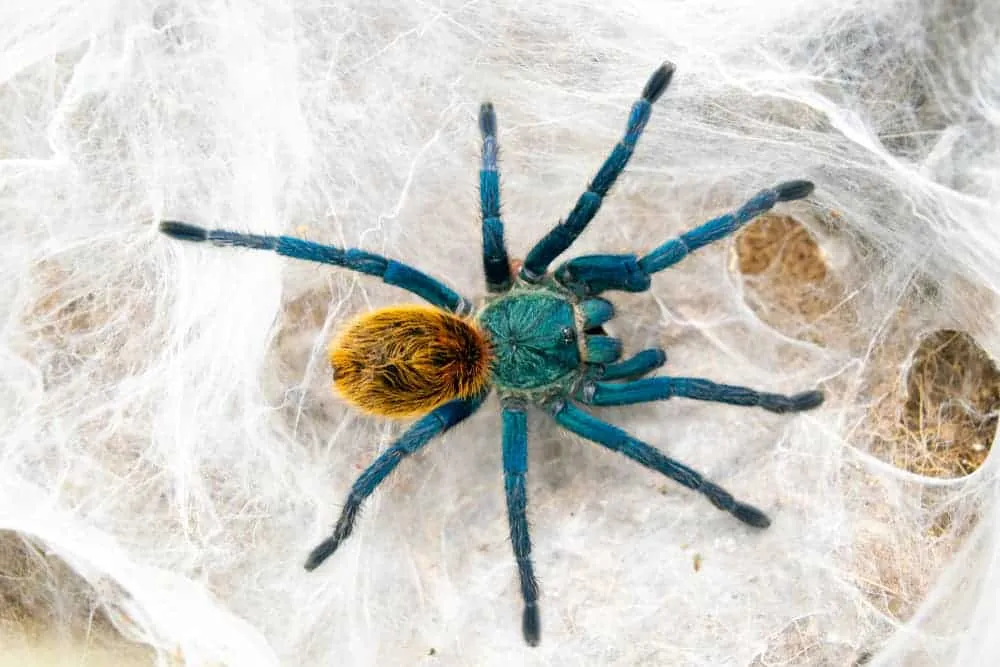What is a Blue Tarantula?
The term ‘blue tarantula’ refers to a group of tarantula species, not a single species, that are known for their striking blue coloration. These spiders are popular in the pet trade due to their vibrant colors and relatively manageable size. Their beauty has made them a sought-after species, but it’s crucial to understand their needs and conservation status. Blue tarantulas are found in various regions, primarily in Southeast Asia and South America, showcasing a diverse range of appearances and behaviors. Understanding the definition of a blue tarantula involves recognizing both their physical characteristics and the ecological contexts that define their existence.
Physical Characteristics
Blue tarantulas are distinguished by their eye-catching blue hues, although the intensity and shade of blue can vary significantly depending on the species, age, and even the spider’s current state. This blue coloration is not due to pigments, but rather, it’s structural, caused by the way the spider’s hairs reflect light. These spiders typically have a hairy appearance, with a body divided into two main parts the cephalothorax (fused head and thorax) and the abdomen. Their legs are covered in sensory hairs that aid in detecting vibrations, which is how they navigate and hunt.
Size and Appearance
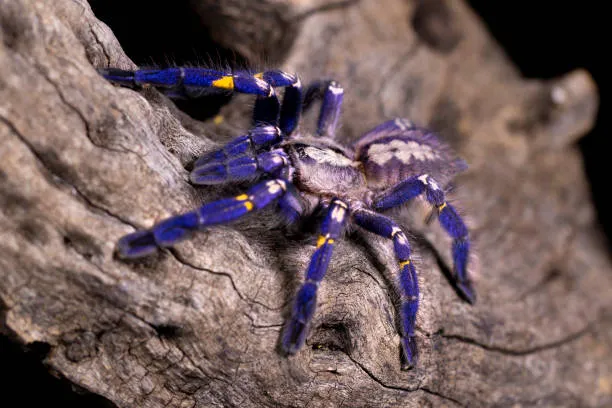
Size varies across different species of blue tarantulas. Some species are relatively small, with a leg span of only a few inches, while others can grow to be quite large. The overall appearance is generally robust, with a thick, hairy covering that helps them blend in with their surroundings. The presence of urticating hairs, used for defense, is also a characteristic trait of New World tarantulas, including many blue species. These hairs can cause irritation if they come into contact with skin.
Color Variation
The blue coloration in blue tarantulas can vary from a pale, almost metallic sheen to a deep, vibrant blue. Some may exhibit additional colors, such as hints of red or orange, depending on the species. The blue color itself is a result of iridescence, caused by the structure of their hairs. This structural color means that the hue can appear different depending on the angle of viewing and the lighting conditions. Understanding this color variation helps in the accurate identification of different species and adds to their appeal.
Habitat and Distribution
Blue tarantulas thrive in specific environments, with their habitats playing a crucial role in their survival. These spiders are found in diverse regions across the globe, each with unique characteristics that influence their behavior and lifestyle. Understanding where these spiders live gives insights into how to conserve their existence. Their distribution is closely linked to specific climatic conditions and the availability of suitable prey, making their habitat essential for their well-being.
Natural Habitat
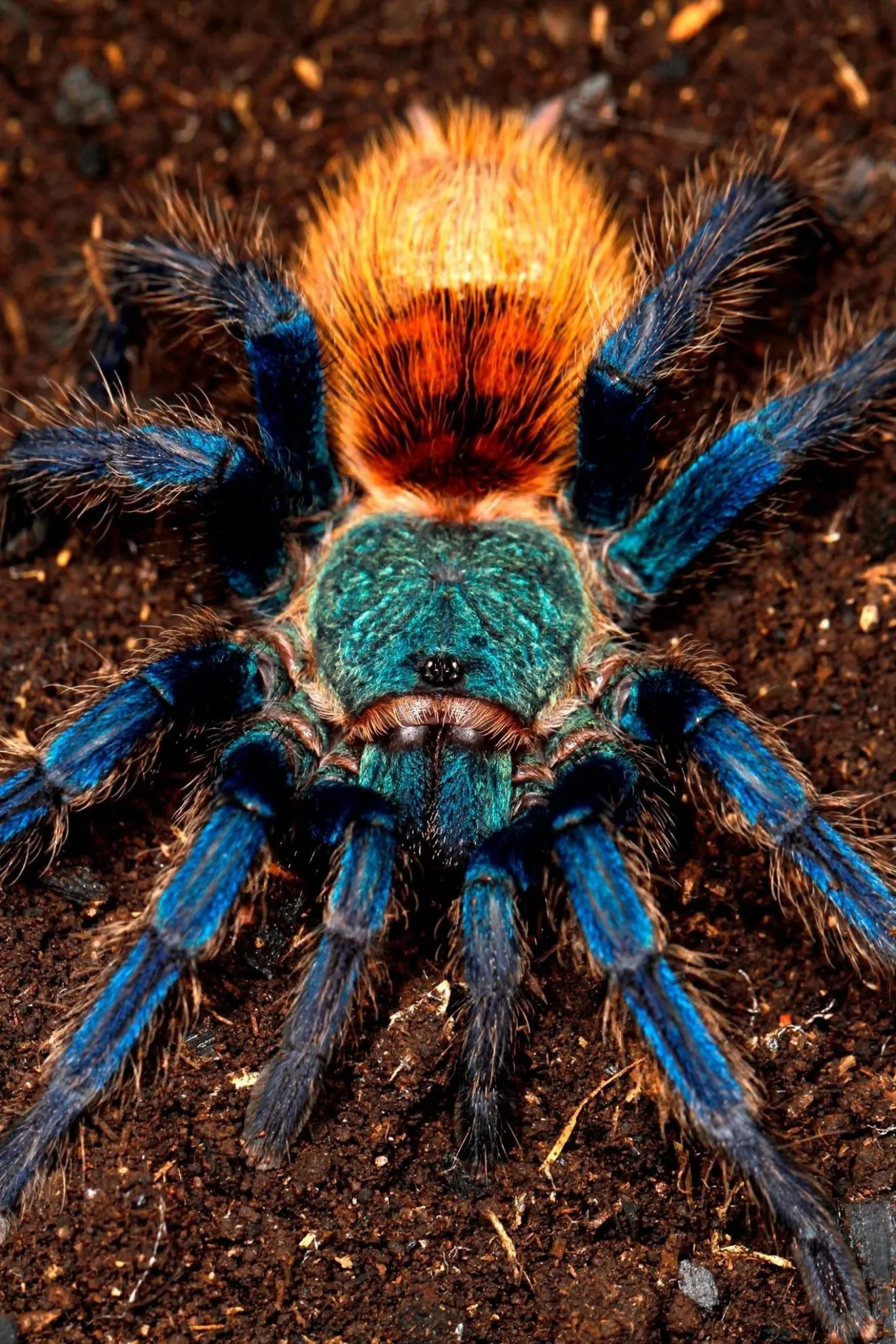
The natural habitats of blue tarantulas are varied, often including tropical and subtropical environments. Many species are terrestrial, living in burrows or utilizing natural shelters on the ground. Others are arboreal, residing in trees or shrubs. The specific conditions, such as humidity, temperature, and ground composition, play a critical role in the spiders’ ability to thrive. Their habitats are usually rich in leaf litter, which offers cover and serves as a place to hunt insects and other small prey.
Geographical Distribution
Blue tarantulas are primarily distributed in Southeast Asia, with species found in countries such as Thailand, Vietnam, and Myanmar. Additionally, some species are native to South America. The geographical range is often limited to specific ecosystems, and understanding these distribution patterns is crucial for conservation efforts. Due to the pet trade, there is a risk of these spiders being introduced into non-native environments, where they could potentially disrupt local ecosystems, emphasizing the need for responsible pet ownership.
Behavior and Lifestyle
Blue tarantulas exhibit fascinating behaviors and lifestyles that have captured the interest of both scientists and enthusiasts. These spiders are active predators, and their daily routines revolve around hunting, shelter, and defense. Studying their behavior provides valuable insights into their ecological roles and conservation requirements. Their lifestyle is adapted to specific habitats, showing a remarkable ability to survive and thrive in challenging environments. Learning about their behavior is a key part of the blue tarantula definition.
Diet and Feeding Habits
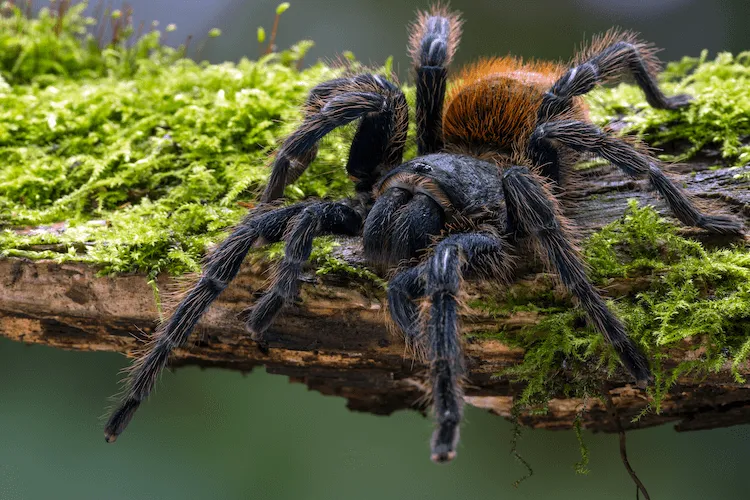
Blue tarantulas are primarily carnivores, feeding on a diet of insects, spiders, and occasionally small vertebrates. Their hunting strategy involves lying in wait or actively pursuing prey, depending on the species. They use their venom to immobilize their food before consuming it. Their diet is crucial to their health and growth, and the availability of prey influences their distribution and behavior. Captive tarantulas must be provided with a varied diet to ensure they receive all the necessary nutrients.
Predators and Defense Mechanisms
In the wild, blue tarantulas face a number of predators, including birds, snakes, and larger mammals. To defend themselves, they have developed a range of defense mechanisms. Urticating hairs, which cause irritation upon contact, are a common defense. They also may bite as a last resort. Additionally, some species are known for their speed and agility, allowing them to escape from danger. Understanding these defenses is important for protecting them in their natural environment.
Conservation Status
The conservation status of blue tarantulas varies across different species. Many species are threatened by habitat loss, the pet trade, and other human activities. Conservation efforts are essential to protect these spiders and their habitats. Assessing the conservation status involves understanding the specific threats they face and implementing effective strategies to mitigate these threats. Awareness is crucial for ensuring their survival.
Threats to Survival
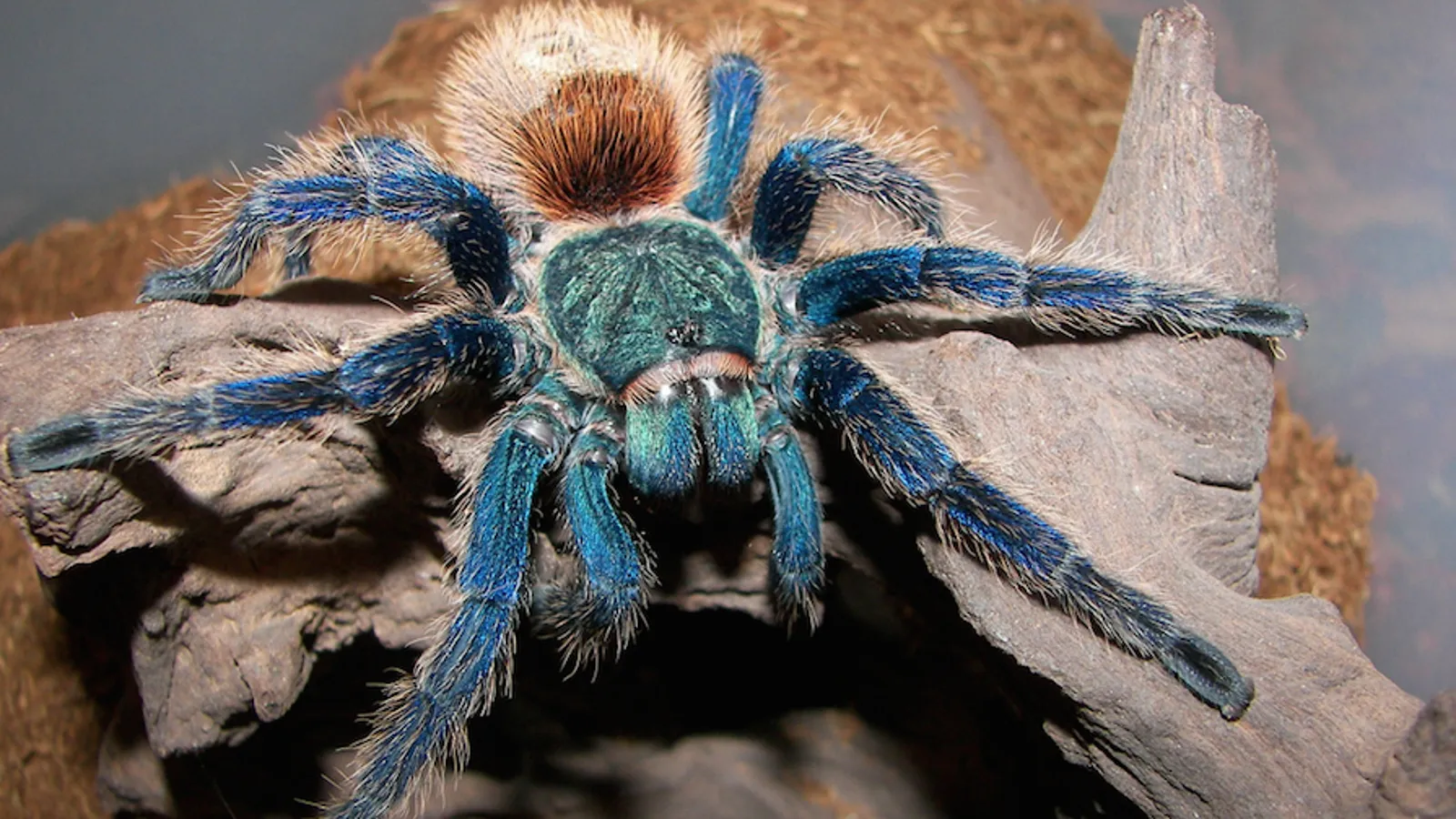
The primary threats to blue tarantulas include habitat destruction due to deforestation and urbanization. The pet trade also poses a significant risk, as many are collected from the wild. Climate change and the introduction of invasive species can also negatively impact their populations. Addressing these threats is essential for the long-term survival of blue tarantulas. Protecting their habitats and regulating the pet trade are key to preserving these spiders.
Conservation Efforts
Various conservation efforts are underway to protect blue tarantulas. These include habitat preservation, captive breeding programs, and regulations on the pet trade. Educating the public about the importance of these spiders is crucial to fostering support for their conservation. International collaborations and research are also essential to better understand and protect these remarkable creatures. Supporting conservation organizations can make a positive impact.
Interesting Facts About Blue Tarantulas
Blue tarantulas are full of interesting facts that enhance their allure and fascinate enthusiasts. Beyond their striking appearance and behavior, these spiders have unique characteristics that distinguish them. Learning about these facts provides insights into their evolution and ecological roles, which is essential for understanding their place in the ecosystem. From unique behaviors to extended lifespans, the blue tarantula definition is full of amazing facts.
Unique Behaviors
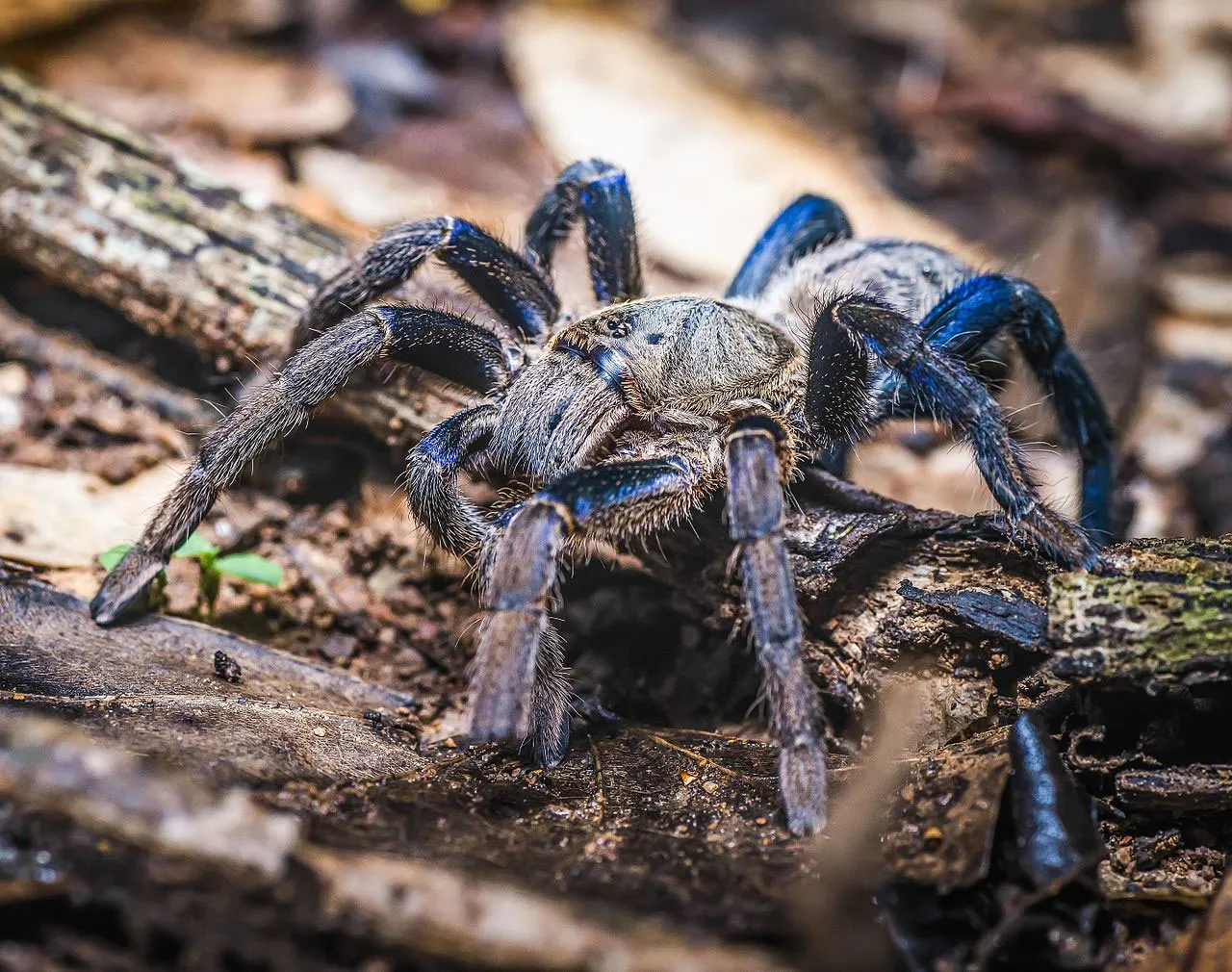
Blue tarantulas exhibit many unique behaviors that are specific to their species. Some construct elaborate burrows, while others are more likely to be found in trees. They are known for their defensive behaviors, such as flicking urticating hairs. The specific behavior is often influenced by their environment and the need to survive. Observing these behaviors provides key insights into their adaptation strategies and their interactions with other species in their habitat.
Lifespan
The lifespan of blue tarantulas varies depending on the species and gender. Females generally live longer than males, often up to 10-12 years or more, while males typically live for a few years. Factors like environmental conditions, diet, and care in captivity impact their lifespan. Understanding the lifespan of these spiders provides context for their growth and development. The longevity of the females often means that they play a significant role in the population’s genetic diversity.
In conclusion, blue tarantulas are a fascinating group of spiders, celebrated for their striking blue coloration, unique behaviors, and their place in the ecosystem. Their captivating features have made them popular in the pet trade, but it’s crucial to understand their needs and the threats they face. From their habitats and behavior to their conservation status, knowing about these spiders is key. By understanding the definition, amazing facts, and conservation efforts, we can help protect these creatures for generations to come.
